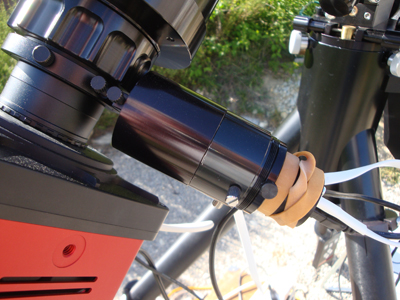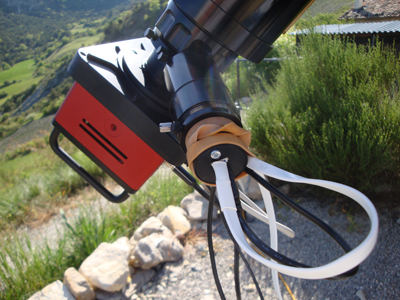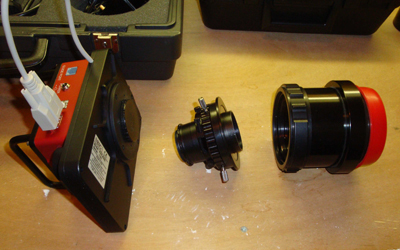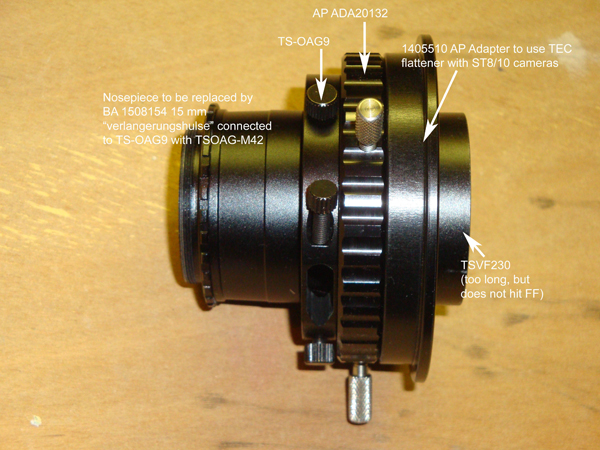
Off-Axis Guiding
For guiding I use the Starlight Xpress Lodestar camera. This camera, in cooperation with the PHD software, works extremely good. A guidescope is not longer necessary. I use a SBIG Off Axisguider.
Finding a guide star is easy with the TEC. With the Meade, with 2500 mm focal distance, it is sometimes more difficult, but untill now I always succeded in finding a guide star. PHD shows very, very faint stars, but guiding is no problem. PHD is freeware.




